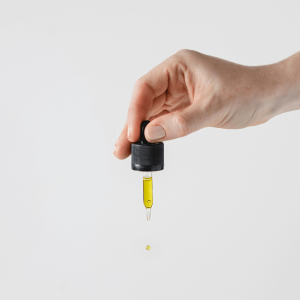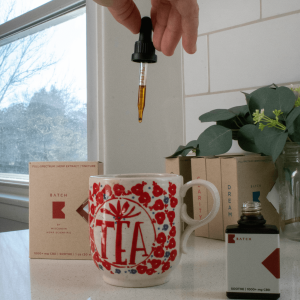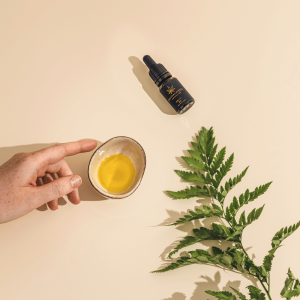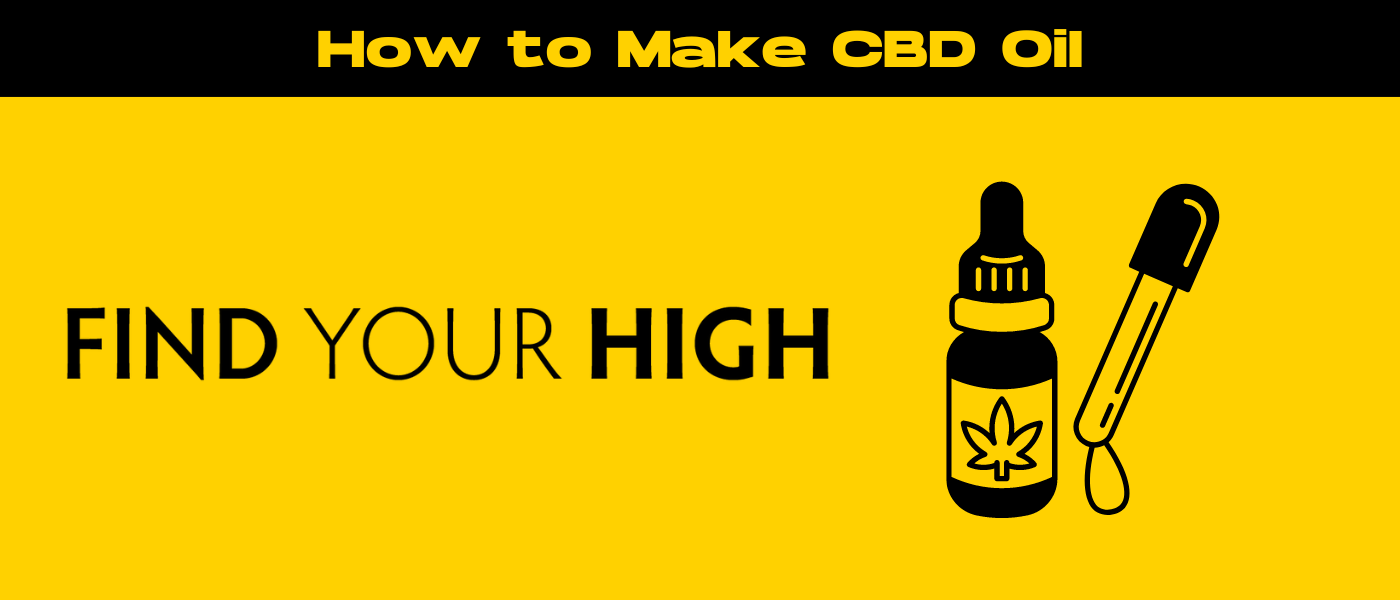CBD, or cannabidiol, has taken the wellness world by storm, capturing the interest of many due to its potential benefits and unique properties. As a non-psychoactive compound found in cannabis, CBD is extracted to create oils that people use for various reasons, from relieving anxiety to easing chronic pain. So, if you’re interested in learning how to make CBD oil at home — you’re in the right place.
This blog aims to introduce you to the world of CBD oil and its advantages while providing a step-by-step guide to making your own batch at home. Whether you’re looking to explore a natural remedy or just curious about the process, this DIY guide will walk you through everything you need to know to create your very own CBD oil tinctures. Let’s get started!
Understanding CBD
CBD, short for cannabidiol, is a natural compound found in the cannabis plant, and it has gained popularity for its potential therapeutic effects. Unlike THC, another well-known compound, CBD doesn’t produce that “high” feeling, making it appealing for those seeking relief without psychoactive effects.
The extraction process can come from either hemp or marijuana, but hemp-derived CBD typically contains less than 0.3% THC, which makes it legal in many places. It’s important to check local laws and regulations, as the legal landscape around CBD products continues to evolve, with various states implementing their own rules.

Benefits of CBD Oil
Many people turn to CBD oil for its potential health benefits. Research suggests that it may help with various issues, such as chronic pain relief, reducing anxiety levels, and even improving sleep quality.
Some individuals find that incorporating CBD oil into their routine aids in managing everyday stresses and contributes to a general sense of well-being. Whether it’s tackling discomfort after a long day or winding down for a restful night, CBD oil has become a go-to option for those looking to enhance their health naturally.
Essential Materials and Ingredients
To make your own CBD oil, you’ll need a few essential materials and ingredients. Here’s a handy list to get you started:
- Glass Jars: Choose a couple of mason jars for infusing your oil.
- Cheesecloth: This will help strain the plant material from the oil.
- Double Boiler: Perfect for gently heating your carrier oil.
- Funnel: Easy pouring into containers post-straining.
- Dark Glass Bottles: For storage to protect your oil from light.
When it comes to ingredients, the key components are cannabis and a carrier oil. You’ll want to use high-quality cannabis, ideally rich in CBD, and your choice of carrier oil, such as coconut oil or olive oil, which helps to extract and hold the cannabinoids.
Choosing the Right Strain
Selecting the right cannabis strain is crucial for making effective CBD oil. Each strain has a unique profile, with varying levels of CBD and other cannabinoids, which can significantly influence the oil’s effects.
For making CBD oil, strains that are high in CBD and low in THC are ideal. Popular recommendations include Charlotte’s Web, which is a high CBD hemp flower strain, and ACDC, which boasts a 20:1 ratio of CBD to THC, making them fantastic options for those seeking therapeutic benefits without the high.

Different Methods of Extraction
When it comes to making CBD oil, there are several extraction methods you can choose from. Each method has its own pros and cons, so it’s essential to find one that suits your needs. The most common methods include oil infusion, alcohol extraction, and CO2 extraction.
- Oil Infusion: This is a simple and traditional method that requires minimal equipment. It’s straightforward but can be less effective in extracting cannabinoids than other methods.
- Alcohol Extraction: This method uses high-proof alcohol to extract CBD from the plant material. It’s efficient but poses some safety risks due to the flammability of alcohol.
- CO2 Extraction: Known for producing high-quality CBD oil, this method employs pressurized CO2 to extract cannabinoids. However, it requires specialized equipment and a bit of an investment.
Method 1: Oil Infusion
Oil infusion is one of the easiest and most popular methods for extracting CBD oil, perfect for beginners. Here’s how you can do it:
- Prepare your cannabis: Start by grinding the cannabis into a coarse texture; the more surface area, the better the extraction.
- Heat your oil: Fill a mason jar with your chosen carrier oil and place it in a double boiler. Heat it gently on low to medium heat (around 160°F to 200°F) to avoid damaging the cannabinoids.
- Combine: Add your ground cannabis to the warm oil and stir well.
- Infuse: Let the mixture simmer for 2-3 hours, stirring occasionally. Keep the heat low to prevent burning.
- Strain: Once infused, strain the oil using cheesecloth to separate the plant material from the oil.
For best results, maintain a consistent temperature during infusion and avoid exceeding the recommended duration, as overcooking can lead to loss of CBD potency and undesirable flavors.
Method 2: Alcohol Extraction
Alcohol extraction is another effective method, known for its ability to extract a wide range of cannabinoids and terpenes, resulting in a potent product. Here’s how to do it:
- Prepare: Just like the oil infusion method, start with ground cannabis. Place it in a glass jar.
- Add Alcohol: Cover the cannabis with high-proof alcohol, ensuring it’s fully submerged.
- Shake: Seal the jar and shake it for a few minutes. Then, let it sit for about 24 hours, shaking it occasionally.
- Strain: After a day, strain the mixture through cheesecloth to remove the plant material.
- Evaporate: Allow the alcohol to evaporate either by leaving it in a well-ventilated area or using a gentle heat source.
While this method can yield potent oil, always prioritize safety. Ensure you’re working in a well-ventilated space to avoid any fire hazards associated with the flammable alcohol.
Method 3: CO2 Extraction
CO2 extraction is often referred to as the gold standard for producing CBD oil. This method uses supercritical carbon dioxide, which operates at high pressures and temperatures to extract cannabinoids effectively.
- Setup: You will need a CO2 extraction machine, which usually consists of a collection chamber, an extraction chamber, and a CO2 tank.
- Extraction Process: To start, place your cannabis in the extraction chamber. As CO2 is forced through the plant material, it converts into a supercritical state, acting like both a gas and a liquid. This allows it to penetrate the plant material and extract the desired compounds.
- Collection: The extracted cannabinoids will then move into the collection chamber, where they can be harvested.
While CO2 extraction is highly effective and results in pure oil, the equipment can be costly and may require some technical understanding to operate effectively.
Straining the Oil
Straining your CBD oil is an essential step that can greatly affect the quality of your final product. It helps to remove any leftover plant material that could lead to an unappetizing texture or taste. A clean, clear strained oil not only looks better but also ensures a smoother application, whether you’re using it for cooking, infusing creams, or taking it sublingually.
To achieve the best results, consider using a double layer of cheesecloth over a strainer to catch even the tiny particles that might slip through. For a more thorough approach, you can also use a coffee filter in conjunction with cheesecloth, which will give you a crystal-clear oil free from any sediment.
Testing Potency
Once you’ve made your homemade CBD oil, it’s important to test its potency to know exactly what you’re working with.
One of the simplest ways to gauge potency is through the use of testing kits available online. These kits typically allow you to analyze a sample of your oil to determine the concentrations of CBD and other cannabinoids. Results are usually easy to interpret and can provide you with a good understanding of how strong your oil is.
Keep in mind that testing your oil can lead to a more tailored approach to consumption, allowing you to adjust your dosages for optimal effects. Whether you’re using your oil for wellness or other purposes, knowing its strength helps ensure a safer experience.

Storing Your CBD Oil
Proper storage of your CBD oil is key to maintaining its freshness and potency. For best results, keep your oil in a cool, dark place, away from direct sunlight and heat sources, which can degrade its quality.
Amber or cobalt glass containers are ideal, as they provide protection from light and help preserve the oil’s integrity. Additionally, make sure the container is tightly sealed to avoid exposure to air, which can lead to oxidation.
Lastly, monitor the oil for any changes in color or smell over time, as these can indicate that it’s no longer fresh.
Dosage Guidelines
When it comes to finding the right dosage of CBD oil, there are several factors to consider, including your age, weight, and the specific condition you’re looking to address. Generally, beginners should start with a low dose, around 5-10 mg per day, and gradually increase it until they find what works best for them.
It’s a good idea to keep a journal to track how you feel in relation to your dosage, allowing you to fine-tune your intake. As a rule of thumb, lighter individuals may need lower doses, while those who weigh more may benefit from higher amounts.
Consulting with a healthcare professional can also provide personalized guidance tailored to your individual needs.
Possible Side Effects
While many people enjoy the benefits of CBD oil without issues, some may experience mild side effects. Common effects can include:
- Fatigue
- Changes in appetite
- Digestive discomfort.
More rarely, individuals may encounter dizziness or mood changes. If you start feeling unwell or notice any persistent side effects, it’s wise to consult with a healthcare professional. They can help determine if CBD is right for you or suggest alternative treatments that might be better suited to your needs.
Final Tips for Success
If you’re trying your hand at making CBD oil for the first time, a few practical tips can make the process smoother.
Always use high-quality cannabis to ensure the best results, and don’t be afraid to experiment with different strains to find what suits you. It’s perfectly normal for things to not turn out perfectly on the first try, so keep your spirits high!
Taking notes on your process and any variations will help you refine your technique over time. Remember, patience and curiosity are key in this journey!

How to Make CBD Oil: Conclusion
Creating your own CBD oil can open up a world of benefits, from relaxation to potential wellness support. Not only does it allow for a tailored approach to dosing, but it also offers a fulfilling experience that connects you with the process. So, dive in and enjoy discovering which methods and strains work best for you!
We’d love to hear about your experiences or any questions you might have, so feel free to share and connect with us as you set off on this project!
How to Make CBD Oil: Frequently Asked Questions
1. How do you make pure CBD oil at home?
To make pure CBD oil at home, you will typically need high-quality cannabis, a carrier oil (like coconut oil, olive oil, or avocado oil), and a gentle heating process that extracts the cannabinoids from the plant material.
2. Can I extract my own CBD oil?
Yes, you can extract your own CBD oil using various methods, such as using solvents like alcohol or fats or through CO2 extraction, but some methods require more equipment and technical know-how.
3. Can I make CBD oil from leaf?
Absolutely! You can make CBD oil from the leaves of the cannabis plant, though using the flowers or buds generally yields a higher concentration of cannabinoids.
4. How do you make full spectrum CBD oil?
Full spectrum CBD oil is made by extracting oil from the whole plant, ensuring that all cannabinoids, terpenes, and other beneficial compounds are preserved, creating a more holistic effect.

 Rewards
Rewards




